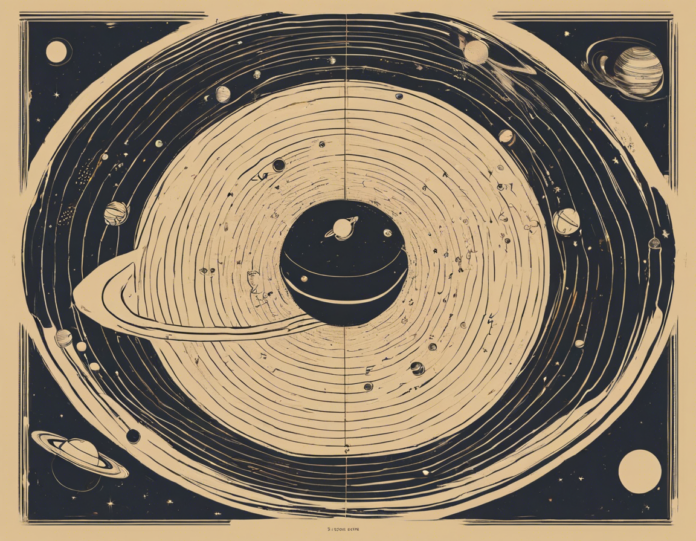Introduction
The vastness of the universe and the intricate dance of celestial bodies never fail to captivate the human imagination. One of the most fascinating phenomena in our solar system is the planetary orbit patterns. Understanding how planets move around the Sun not only sheds light on the physical laws governing our cosmic neighborhood but also offers valuable insights into the formation and evolution of planetary systems. In this comprehensive guide, we will delve into the intricacies of planetary orbits, explore different types of orbital patterns, and uncover the underlying principles that govern these celestial motions.
The Basics of Planetary Orbits
At the heart of planetary orbit patterns lies the gravitational pull exerted by the central star, in our case, the Sun. This gravitational force, described by Isaac Newton's law of universal gravitation, serves as the invisible string that keeps planets in their orbits. The balance between the forward inertia of a planet's motion and the inward pull of gravity results in stable, elliptical paths known as orbits. These orbits can be characterized by several key parameters:
1. Eccentricity: The degree of elongation of an orbit is quantified by its eccentricity, ranging from 0 (perfectly circular) to 1 (highly elliptical). Planets like Mercury exhibit more elliptical orbits compared to nearly circular paths traced by Venus and Earth.
2. Inclination: The angle between the plane of a planet's orbit and the plane of the ecliptic (the Earth's orbital plane) is known as inclination. It determines the tilt of a planet's orbit relative to the Sun's equator.
3. Orbital Period: The time taken by a planet to complete one full orbit around the Sun is termed the orbital period. This parameter is directly related to a planet's distance from the Sun, following Kepler's third law of planetary motion.
Types of Planetary Orbits
In the vast expanse of the cosmos, planetary orbits exhibit a remarkable diversity of patterns and characteristics. From almost circular paths to highly elliptical trajectories, each planet in our solar system follows a unique orbital pattern. Let's explore some of the common types of planetary orbits:
1. Prograde Orbits: Most planets in our solar system, including Earth, follow prograde orbits, moving in the same direction as the Sun's rotation. These orbits are counterclockwise when viewed from the celestial North pole and are characterized by their stability and uniformity.
2. Retrograde Orbits: In contrast to prograde orbits, retrograde orbits involve planets moving in the opposite direction to the Sun's rotation. While rare in our solar system, some moons, such as Triton around Neptune, exhibit retrograde motion, indicating complex orbital dynamics.
3. Resonant Orbits: Resonant orbits occur when the orbital periods of two celestial bodies form a simple integer ratio, leading to repetitive gravitational interactions. An example is the moons of Jupiter, exhibiting resonant orbits that create unique patterns of stability and periodicity.
4. Trojans and Greeks: Trojans and Greeks are groups of asteroids that share an orbit with a larger planet, situated at stable Lagrange points 60 degrees ahead (Greeks) or behind (Trojans) the planet. These clusters of asteroids showcase complex gravitational interactions within planetary systems.
5. Horseshoe Orbits: Horseshoe orbits occur when a smaller body, such as an asteroid or a moon, approaches a planet, experiences gravitational perturbations, and ends up in a horseshoe-shaped path relative to the planet. This dynamic orbital pattern highlights the intricate interplay of gravitational forces in celestial mechanics.
FAQs about Planetary Orbit Patterns
1. What determines the shape of a planet's orbit?
The shape of a planet's orbit, whether circular or elliptical, is primarily influenced by its eccentricity, a measure of how elongated the orbit is. Factors such as gravitational interactions with other bodies can also impact orbital shapes.
2. Why do some planets have tilted orbits?
Tilted orbits, characterized by high inclinations, can result from past collisions, gravitational perturbations from other planets or external forces, and the dynamics of planetary formation. These tilted orbits contribute to the orbital diversity observed in planetary systems.
3. How do resonance effects influence planetary orbits?
Resonance effects arise when the orbital periods of celestial bodies exhibit simple integer ratios, leading to stable configurations or periodic interactions. These resonant orbits play a crucial role in shaping the long-term stability and dynamics of planetary systems.
4. Are all planetary orbits stable over long periods?
While planetary orbits are generally stable over short timescales, factors such as gravitational perturbations from nearby planets, interactions with asteroids or comets, and external influences can potentially destabilize orbits over millions of years.
5. Can planetary orbits change over time?
Yes, planetary orbits can evolve over vast timescales due to various factors such as gravitational interactions with other celestial bodies, tidal forces, and secular perturbations. These gradual changes contribute to the dynamism of planetary systems.
In conclusion, planetary orbit patterns represent a remarkable tapestry of celestial motions shaped by gravitational forces, resonance effects, and orbital dynamics. Exploring the diverse orbital configurations within our solar system not only enhances our understanding of planetary motion but also unveils the captivating beauty of cosmic choreography. As we gaze upon the night sky, let us marvel at the elegant dance of planets and moons, each following its unique path in the vastness of space.

